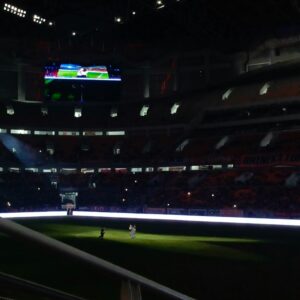The Rise of Smart Visual Communication
Smart cities rely on digital technologies to enhance urban life. From transport to energy management, data and visuals play a major role. In this transformation, flexible LED display panels emerge as a powerful visual tool.
These modern screens combine dynamic design with advanced LED technology. They serve as real-time communication platforms across smart urban infrastructure. Consequently, city planners and digital architects are turning to flexible displays to modernize communication systems.
1. Understanding Flexible LED Display Panels
Flexible LED screens differ significantly from traditional rigid displays. While conventional screens use stiff PCB substrates, flexible screens use bendable materials.
Key Characteristics Include:
Lightweight and ultra-thin construction
Curvable to various shapes and surfaces
Energy-efficient with low power consumption
Modular for custom size and pixel pitch
These qualities allow flexible LED panels to fit non-flat surfaces—columns, building facades, public art, and more. Their design adaptability makes them ideal for futuristic cityscapes.
 2. Benefits for Smart City Applications
2. Benefits for Smart City Applications
In a smart city, visual data must be dynamic, accessible, and adaptive. Flexible LED screens meet these requirements with precision.
2.1. Seamless Integration with Urban Architecture
Urban infrastructure features diverse contours—curves, angles, and irregular shapes. Traditional screens often clash with such a design. Flexible LED panels, however, seamlessly wrap around complex surfaces, preserving architectural integrity while delivering digital content. This ability enhances the aesthetics of smart buildings, transit hubs, and plazas.
2.2. Real-Time Information Sharing
Smart cities thrive on data. Transit updates, emergency alerts, and weather reports must reach the public instantly. With high brightness and vivid contrast, flexible LED panels broadcast real-time data clearly, day or night. Whether installed at bus stops or airports, these screens ensure critical information is always visible.
2.3. Interactive Wayfinding and Engagement
Flexible LED display panels support touchscreen functions and sensors. As a result, cities can offer interactive maps, visitor guides, or event listings on curved kiosks and digital totems. This fosters higher civic engagement and supports tourists in navigating unfamiliar areas with ease.
3. Design Versatility and Space Optimization
Unlike bulky displays, flexible LED modules are compact and adaptable. Their space-saving profiles are especially useful in crowded urban areas.
Moreover, they support creative installations such as:
Cylindrical LED columns
Wavy display ribbons across walls
Curved media facades
Immersive tunnel displays
Because these screens conform to available space, they optimize both visibility and design harmony.
4. Durability and Low Maintenance
Flexible LED screens are built to withstand urban challenges. With IP-rated waterproofing and weather resistance, they operate in rain, dust, and extreme temperatures.
Additionally, SMD technology and fanless designs reduce mechanical failures. These features lead to lower maintenance and long-term reliability, a critical factor for public installations.
5. Energy Efficiency and Environmental Impact
Smart cities prioritize sustainability. Flexible LED panels support this goal in several ways:
- Low power consumption with high-lumen efficiency
- Long lifespan, reducing waste
- Smart dimming based on ambient light
These displays consume less energy than LCD or plasma alternatives. Over time, cities benefit from reduced carbon footprints and lower operational costs.
6. Flexible LED Screens and Smart City IoT Integration
A truly smart city connects all systems via the Internet of Things (IoT). LED screens now integrate with IoT platforms to display data collected from traffic sensors, pollution monitors, or surveillance systems.
Such integration enables:
- Real-time traffic redirection
- Dynamic advertisements based on foot traffic
- Emergency messaging based on alerts
By linking display content to real-time inputs, flexible LED panels enhance situational awareness and responsiveness.
7. High-Impact Advertising and Revenue Generation
Smart cities often fund public projects through digital advertising. Flexible LED display panels support high-resolution, dynamic content that attracts advertisers.
Since they fit unique spaces, these displays offer premium ad real estate on pillars, tunnels, or curved buildings. This boosts revenue while keeping the city’s visual identity intact.
8. Case Studies and Global Applications
Several cities already use flexible LED screens effectively.
- Seoul uses curved LED walls in transit centers for updates and ads.
- Dubai wraps towers in digital ribbons for public campaigns.
- Tokyo integrates flexible LED signage into subway corridors.
Each example highlights how flexibility, performance, and durability transform public communication.
9. Technical Challenges and Solutions
While powerful, flexible LED technology presents challenges:
| Challenge | Solution |
|---|---|
| Module misalignment | Use high-tolerance PCBs and magnetic alignment |
| Thermal buildup | Apply advanced cooling materials and structures |
| Signal latency | Use synchronous controllers with 5G integration |
With experienced engineering, these challenges can be managed effectively for stable, real-time performance.
10. Future Outlook: The Evolution of Urban Screens
As 5G and AI progress, flexible LED displays will become even more integral to smart cities. Expect features such as:
Wi-Fi-controlled content updates
Biometric recognition integration
Smart retail walls with responsive ads
Environment-sensing displays that adapt to light, noise, and pollution
Cities of the future will merge design, data, and display through flexible LED innovations.
Conclusion: Shaping Smarter Urban Experiences
In conclusion, flexible LED display panels are more than visual tools. They are foundational components of smart urban communication systems. By enabling adaptive, engaging, and efficient messaging, they bridge the gap between infrastructure and information.
At TOPLED, we provide state-of-the-art flexible LED solutions tailored to modern cities. As cities become smarter, our technology ensures they stay connected, informed, and visually striking.




